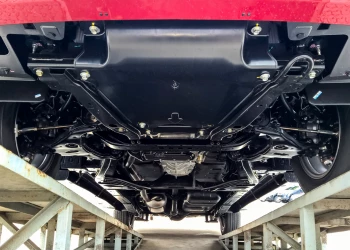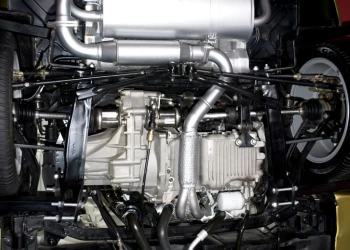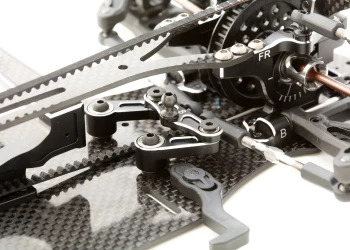Interview: Is Modularity the Future of EV Architecture?
Exclusive Insights from Plasan’s Director of Design
Add bookmark
Nir, it is excellent to have you as part of the keynote speaker faculty at Automotive IQ’s Next-Generation Modular EV Platforms 2021 conference, taking place online on April 6 & 7.
For the benefit of our readers, the event will bring together pioneering automotive companies and technology providers that are developing modular EV platforms, revolutionizing electric vehicle design & making them future-ready.
To set the tone of this interview, can you tell us a little bit about your role at Plasan?
I have been responsible for vehicle design at Plasan for nearly 20 years. For the first ten years this was entirely for our armoured vehicles where I lead the design team that has designed many of the world's most successful modern armoured vehicles, such as the Oshkosh M-ATV and JLTV and the Thales Hawkei. These vehicles were all designed to make cost-effective and efficient use of composite materials in multi-material architectures designed for scale production in conventional facilities. After successfully moving the very conservative military industry on from welded steel bodies to multi-materials and composites, we turned our attention to applying these same principles to the mainstream automotive market. For the last decade my role as Design Director has also included responsibility for design at our automotive subsidiary, Plasan Carbon Composites, where I have been leading efforts to develop techniques for applying composites to truly mass-produced mainstream cars in the interests of cost-effective weight reduction.
From our conversations and industry news, it is clear that state-of-the-art, cost-effective, modular EV platforms have the potential allow for a completely integrated vehicle and allow vehicle manufacturers to achieve better production costs and improved specifications in their vehicles. With a multitude of companies, unveiling cutting-edge modular EV platforms, do you feel the future of EV’s is modular?
Modularity, when done well, is of great benefit to manufacturers, and this is no different with EVs. There is perhaps more opportunity for it, because much of the hardware can be common for a broader range of applications, with only battery size and software differentiating between base vehicles and more powerful premium ones. OEMs are still on a steep learning curve with EVs, and the immaturity of the market is also adding fast-changing variables to its demands. A well-designed modular architecture can allow OEMs to react quicker to these rapidly changing customer expectations, especially regarding range where I believe that the market, as it matures, will actually lower its expectations to meet its true daily needs which for the vast majority of buyers are nothing close to the range of a full tank of fuel.
How similar or different is Plasan’s approach to EV platforms/architecture to some of the more mainstream automakers?
Plasan has always been focused on cost-effective and mass-producible solutions. When it comes to using composites to save weight, the traditional industries of motorsport and aerospace are very good at optimizing for weight but are particularly bad at optimizing for cost. Plasan's focus is on the inverted metric of cost added per kilo saved, and establishing solutions which keep this number as low as possible. It is all about scraping off the last dollar rather than scraping off the last kilo, and this allows us to save weight at a low cost, and using processes, that are suitable for mainstream automotive mass production.
In your opinion, what are some of the biggest challenges that the automotive industry is facing right now? Where will the greatest innovation come from in the near future?
Uncertainty is the biggest challenge. The automotive industry is conservative by nature and necessity. Its whole business is based on making huge long-term investments that require multi-year strategies and often the return on investment comes in very small unit profits offset by large volumes. The inability to be able to confidently identify what the market will demand from the next product cycle can be paralyzing for a large vehicle OEM. Clever and flexible modular architectures that can allow manufacturers to rapidly respond to the changing market will be what saves those who have the creativity to develop such platforms.
Your session at Automotive IQ’s Next-Generation Modular EV Platforms 2021 Online event will look at novel body-in-white architecture for cost-effective mass-production of composite-intensive car body structures. Can you share some of the main themes of your talk?
For a whole century cars have been made from pressed welded steel. This basic architecture is so embedded into our whole notion of what a car is, what it looks like, and how it's made, that we are often blind to how much it dictates what we expect from alternative materials. Cars are painted because steel rusts, they are smooth and shiny because pressed metals look like that. But why should we insist that alternative materials look and behave like metals as a prerequisite for applying them to a car body? Manufacturers design cars on the assumption that all of the parts are pressed steel, and then expect alternative materials like composites to look like that too. But pressing composites is not always the most cost-effective way to process them. We have developed a new architectural concept for mass-produced bodies-in-white that makes extensive use of lower cost composite pultrusions and yet is suitable for assembly in a conventional layered process that can be performed on a fairly conventional car production line. The finished car body does not look any different from a conventional pressed steel body, but can be 45% lighter for only a relatively small cost premium, one easily offset by the smaller battery and other components that the significant saving in body weight allows. I will be presenting this BIW concept and the associated FEA simulations and crash analysis at the upcoming Automotive IQ conference.
Which topic on the agenda has been peaked your interest the most, and who are you most looking forward to hearing from?
I always relish the opportunity at these conferences to hear directly from OEMs, to better understand their needs and concerns and what they are working on.
Finally, what are your top reasons why the industry should attend the Next-Generation Modular EV Platforms 2021 online conference, on April 6 & 7?
The industry has so many challenges ahead, and so much uncertainty, that the only way to solve the many new problems that electrification and environmental concerns are requiring solutions to is through collaboration between OEMs and suppliers. This conference offers such an opportunity to share ideas and solutions and to work together for a better future, both for our planet and our respective companies.





























